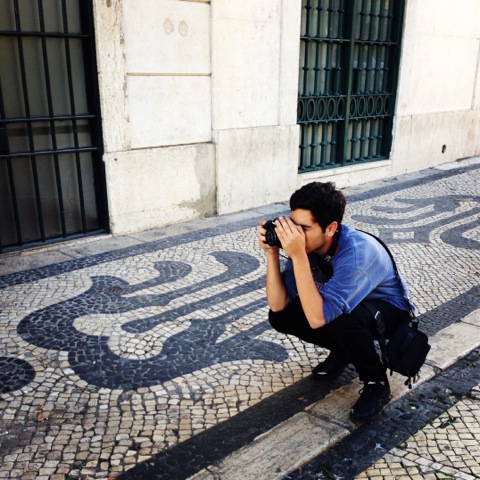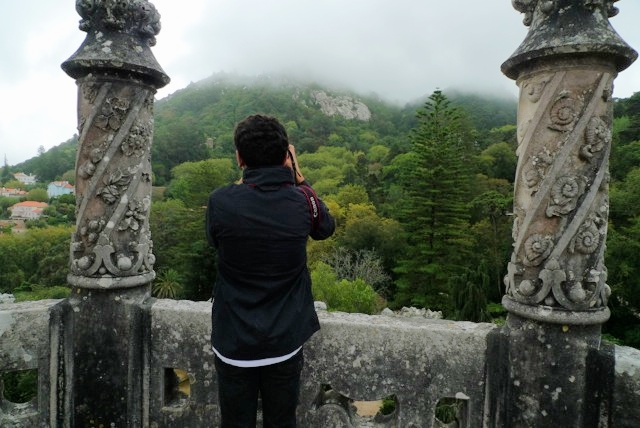Lisbon: Aimless Wander
Freshman fall, a long weekend break—where to go for a few days with my son? It was his desire to go to Lisbon; somewhere new to both of us, and easy enough to explore in a short time. Before we left for our trip, I came across a touching piece Frank Bruni wrote for the NY Times: How I fell for Lisbon. To paraphrase, Lisbon unlike many European cities has no major “checklists”--no must do’s like the Louvre in Paris or the Sistine Chapel in Rome. Rather, the City of Seven Hills (as it’s commonly refereed to) is ideal to wander, to roam, to get lost in. It sounded perfect for some catch up quality time with my independent college boy.
DAY ONE
Tripper Tips:
I can’t wait to book my ticket to Comporta, the fashionable chic beach retreat just one hour from Lisbon. Under the radar for now, but with talk of an Aman opening soon that may change. (Though it looks like the project may be on hold.) Beautiful sandy beaches, great food, it’s a place to relax and unwind.
I’m staying at Casas Na Areia, a super cool small hotel designed by architect Manuel Aires Mateus, or five minutes away the even smaller Cabanas no Rio, 2 old fisherman shacks turned into simple, but luxurious cabins along the River Sado, a natural nature reserve. You can be sure that I’m going to eat at Museo do Arroz.
Stay: We loved the Barrio Alto, a small, chic boutique hotel designed by Grace Leo Andrieu, and what a location! Located right in the heart of the city bordering the chic Chiado and bohemian Barrio Alto neighborhoods, you can walk everywhere from here. Don’t miss having drinks or snacks on the roof top terrace with killer views of the Rio Tejo and the old Lisbon rooftops!
Splurge: A friend just told us at Daytripper about Palacio Belmonte, an elegant and historic 10 suite hotel housed in a 15-century palace. Located high in the hills of Alfama, each extravagant suite is uniquely designed with private terraces overlooking the Tagus. With no televisions, air conditioning and room service it's not for everyone, but how often do you get to have a palace pretty much to yourself. Take a look at this property; it's pretty special!
Another option: Friends recently stayed at Palacete Chafariz del Rei, a Neo Moorish building dating back to the 19th century. Her description…”a lovingly restored “palace” by a very hip gay couple. We loved it, finding the whole experience very special. Less central than the Barrio Alto Hotel, it’s located in an interesting, beautiful area in Alfama where at night all the Fado clubs are. The owner, Rui, is around and can answer all of your questions. It has the feel of a bed & breakfast.”
Morning: Arriving fresh off of the overnight flight put us in need of coffee; how convenient that A Brasileira, Lisbon’s most famous and iconic grand café, was right across the street. This is a great spot. After you admire the stunning art deco interior, have a “bica” (an espresso) and a pastry on the outdoor terrace.
To Market: Mercado da Ribeira is Lisbon's main food market filled with stalls offering the freshest fish and vegetables of the day. It's been the city's main market since it opened in 1892. Recently, Time Out Lisboa magazine, transformed this market into a foodie hangout where top chefs bring their favorite dishes to the market.
Ride: Jump on Tram 28 right outside the hotel to head towards Alfama, the oldest, most historic district in Lisbon. Meander the medieval alleyways and steep hills, admiring the colorful mosaics and constant incredible water views at every turn. Getting lost in the narrow streets is part of the fun! This is old school Lisbon, your picture postcard images. High up the red rooftops below make for a scenic panorama. It’s worth it to spend some time at Sao Jorge Castle. This Moorish castle dating back to the 10th century is visible everywhere in the city from its high hilltop position. After, head down and admire the view at the Santa Luzia viewpoint. A few steps away another ideal viewpoint is Miradouro das Portas do Sol. Even better go to Café Portas do Sol and recharge on one of the sofas or tables overlooking the water. You can have a light lunch or some drinks here while basking in the view.
Saturday Market: Visit Feira da Ladra, the Thieves market. My son loved rummaging through the junk--I mean stuff-- at this flea market—musical instruments, clothing, and old records. We left with some military medals and vintage postcards. The market also sets up on Tuesdays.
Wander: Head back towards downtown, making sure to stop in the magnificent Praco do Comercio, Lisbon’s grandest plaza. Then, head over to Rossio Square, and hit some shops along the way. You’ll soon discover that cork products are everywhere as Portugal produces half the world’s cork supply. Pelcor is a good place to shop for cork bags, bracelets, and all kinds of accessories. It wasn’t my thing but perhaps it will “pop” for you. I preferred admiring all the goodies in the many gourmet food stores—loads of bacalhau, tins of sardines, Porto, Madeira and other liquor digestives.
Lift: I thought about skipping it, as there was a line and it seemed touristy, but I’m glad I waited at the Santa Justa elevator, a beloved Lisbon landmark. Your rewarded with incredible 360 views of the streets below and the surrounding area. It’s more than just scenic, but built for practicality, designed to connect the lower streets of Baixa, the downtown area, with the higher Carmo Square. Wander around Carmo Square before heading back towards Chiado.
One Stop Shop: You don’t have to go any further to find gifts to bring home for friends, or yourself, than at A Vida Portuguesa, a beautiful store selling high end local products. Specialty soaps, old style traditional products, teas, exquisitely designed tins of sardines, even the Couto toothpaste in its bright orange and black box found it’s way into my suitcase as a souvenir.
Sweet: There’s usually a line at Santini for the handmade gelato, try the cinnamon or bitter orange with chocolate. There’s a shop in Cascais as well where it all began back in 1949.
Wine Before Dine: The Barrio Alto is quiet now with people starting to fill up the many restaurants, but still calm till the party really begins after midnight. At the Old Pharmacy sip some of Portuguals finest from their extensive list at small tables created from wine barrels.
Dinner: We loved the tasting menu at 100 Mareinas and the shellfish stew with cilantro and spiced bread at Pap ‘Acorda. We had a great meal at Cantinho do Avillez, chef Jose Avillez’s trendy, more casual restaurant to his Michelin starred Belcanto, considered one of the best restaurants in Lisbon.
Picky Eaters: Great pizza can be found at Casanova, along with great views along the river. Open late.
Late night: Barrio Alto becomes one big block party at night with people spilling out into the streets. With over 250 bars, from quiet wine bars to more boisterous clubs there is something for everyone to join in the party.
Day Two
Beyond The City: You can easily travel by yourself to Sinatra or Cascais by train, each about 30 minutes, but as we only had a short time we decided to do the 7-hour X-day trip with We Hate Tourism Tours. Billed as the anti tour, this is a fun way to see many sights outside of Lisbon in a small group. (We were 8) Our first stop was Fairytale Sinatra, where we spent an hour at Quinta da Regaleira, a Neo-gothic mansion with picturesque lakes, grolloes, waterfalls and secret tunnels. The views from the house are pretty spectacular. After some time in town we headed to the dramatic viewpoint of Cabo da Roca, the most western part of mainland Europe. We spent some time walking the seaside promenade between Cascais and Estoril, and then drove to nearby Guincho Beach, popular with surfers due to the rough Atlantic waves. The beaches are beautiful, slightly wild and go for miles. I’d love to go back and spend more time on another trip. Our last stop was Belem; home to the National Place, Jeronimos Monastery and the Belem Tower. Some say the most delicious pastry in the world can be enjoyed at Pastel de Belem, try one of their velvety custard tarts and decide for yourself. While the Monastery and Tower were impressive, the scale of the production and amount of visitors at this pastry shop dating back to the 1830’s was equally enjoyable. Belem is easily accessed by a quick tram ride from Comercio Square, it’s definitely a must do when in Lisbon.
Dinner: Playing tourist for the day we continued with a traditional Fado Show. Fado is the unique sound of Lisbon, the melancholy national music that is sung from the heart often about life, about love. At Senhor Vinho or Clube de Fado, Lisbon’s most popular and famous Fado venues you have dinner while some of the top singers perform. The traditional Portuguese dishes were good enough and it was a fun experience. Would I do it again? Probably not, instead I would seek out a smaller, more authentic bar to hear this traditional folk music. But as first time visitor’s we felt it was a good introduction to the tradition and sounds of Fado. And a fun night out!
Impressions: Well you know the song—Red, Red Wine, here in Lisbon it goes like this—Red, Red Roofs. Seriously, what struck me most was that Lisbon was a city of color—the blue of the Tagus, the colorful ceramics, the black and white mosaic floors in the city center and the colorful houses in Alfama. And yes the red of the roofs.














